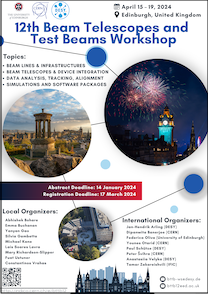Speaker
Description
Multiple Coulomb scattering of charged particles in matter is in high energy physics often seen as a nuisance due to its stochastic nature and the concomitant deterioration of tracking and momentum resolution. In this contribution studies on a technique are presented utilising this effect for the purpose of a medical imaging method, electronCT.
This technique applies radiation detectors developed in high energy physics to determine the scattering power of highly relativistic electrons in any sample, phantom or patient to determine the properties of the traversed material, offering the capabilities of two- and three-dimensional imaging.
In the context of radiation therapy with electrons of energies in the range of 100 to 250 MeV, called Very-High Energy Electron (VHEE), this technique has the potential of applying the same accelerator for treatment as for imaging, where the latter can mean a full diagnostic measurement or a high-precision location of a tumour.
Studies towards this technique have been performed at the ARES linear accelerator at DESY using silicon pixel detectors for radiation detection. In this contribution we present the principles of the imaging method electronCT and the experimental setup, as well as results in terms of two- and three-dimensional imaging of phantoms in a test beam-like environment.
